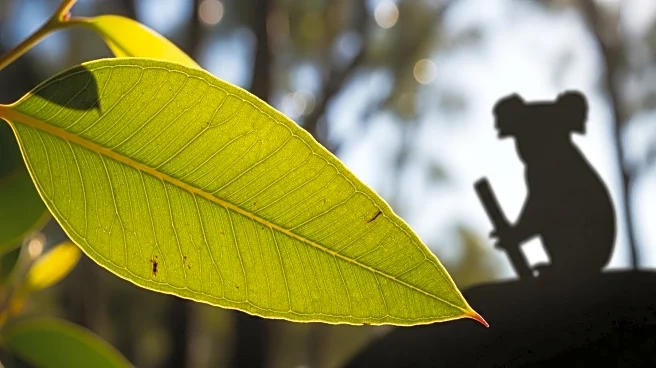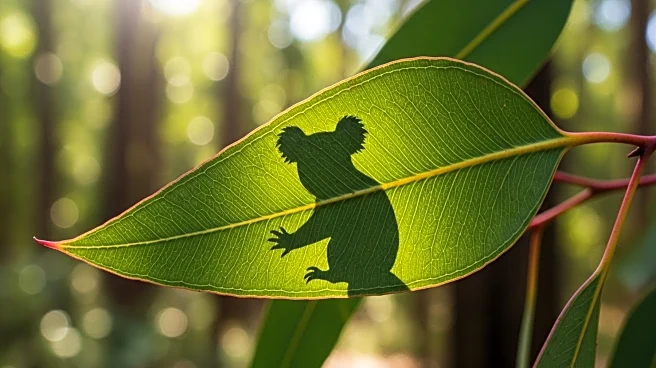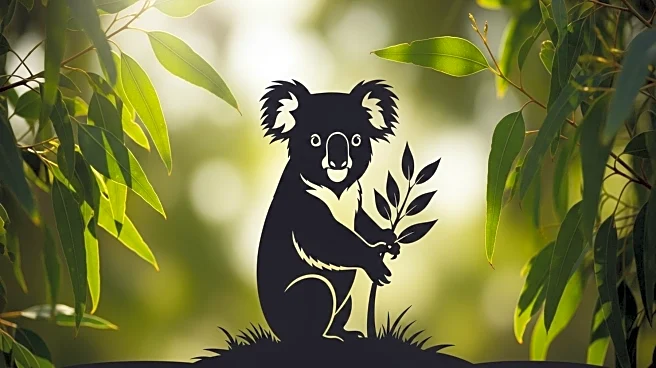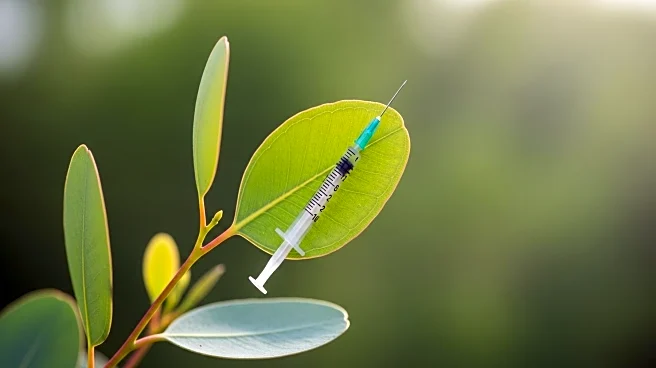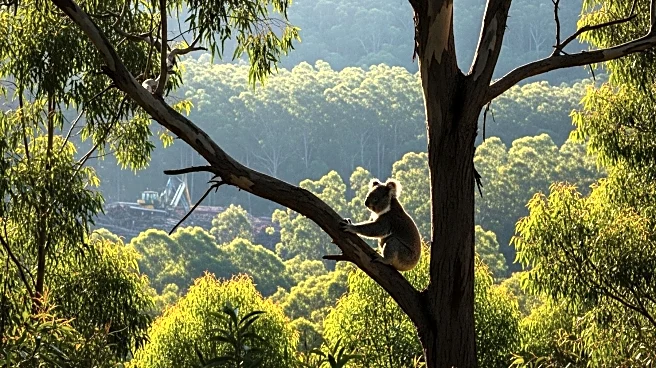What's Happening?
Researchers at Australia's University of the Sunshine Coast have developed a single-dose vaccine to combat chlamydia in koalas, marking a world-first initiative. The vaccine aims to protect koalas from the severe effects of chlamydia, which include urinary tract infections, infertility, blindness, and death. Chlamydia is responsible for half of the deaths in Australia's wild koala populations, particularly in South East Queensland and New South Wales, where infection rates can reach up to 70%. The vaccine has been approved by the Australian Pesticides and Veterinary Medicines Authority for production and widespread use, following successful trials on hundreds of wild and captive koalas. The study found that the vaccine reduced the likelihood of developing symptoms during breeding age and decreased mortality by at least 65%.
Why It's Important?
The development of this vaccine is crucial for the conservation of koalas, which are considered endangered in several Australian regions. Chlamydia poses a significant threat to koala populations, contributing to their decline alongside habitat loss and other environmental challenges. The vaccine offers a promising solution to reduce mortality rates and improve the health of koalas, potentially preventing local extinctions. This initiative also highlights the importance of scientific research in addressing wildlife diseases and preserving biodiversity.
What's Next?
With the vaccine now approved for widespread use, researchers and conservationists will focus on implementing vaccination programs across affected regions. Monitoring the impact of the vaccine on koala populations will be essential to assess its effectiveness and make necessary adjustments. Additionally, efforts to protect koala habitats and address other threats, such as bushfires, will continue to be important for their long-term survival.
Beyond the Headlines
The vaccine's development underscores the ethical responsibility to protect endangered species and the role of scientific innovation in achieving this goal. It also raises awareness about the interconnectedness of animal health and environmental conservation, prompting discussions on how similar approaches can be applied to other species facing similar threats.
